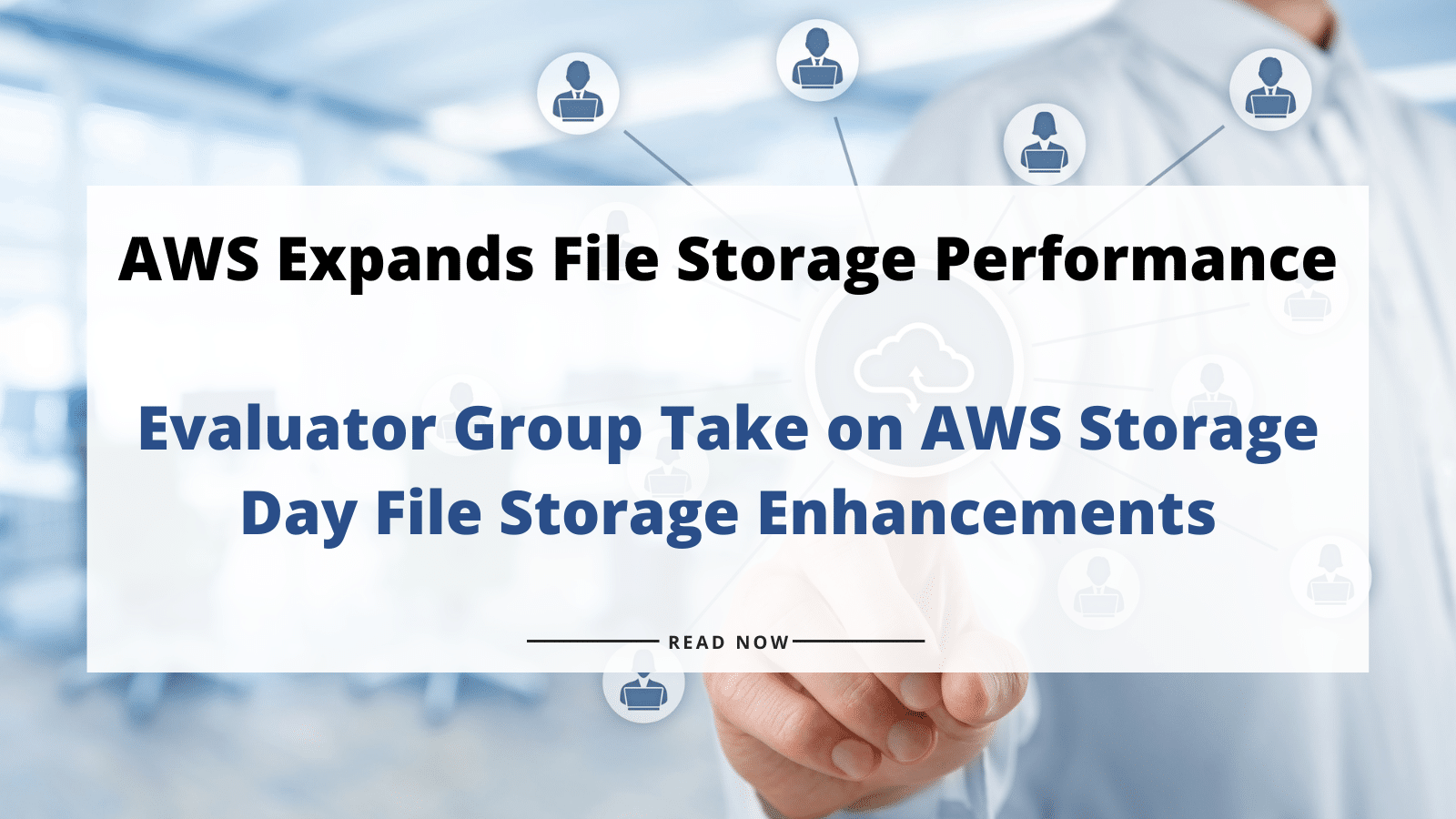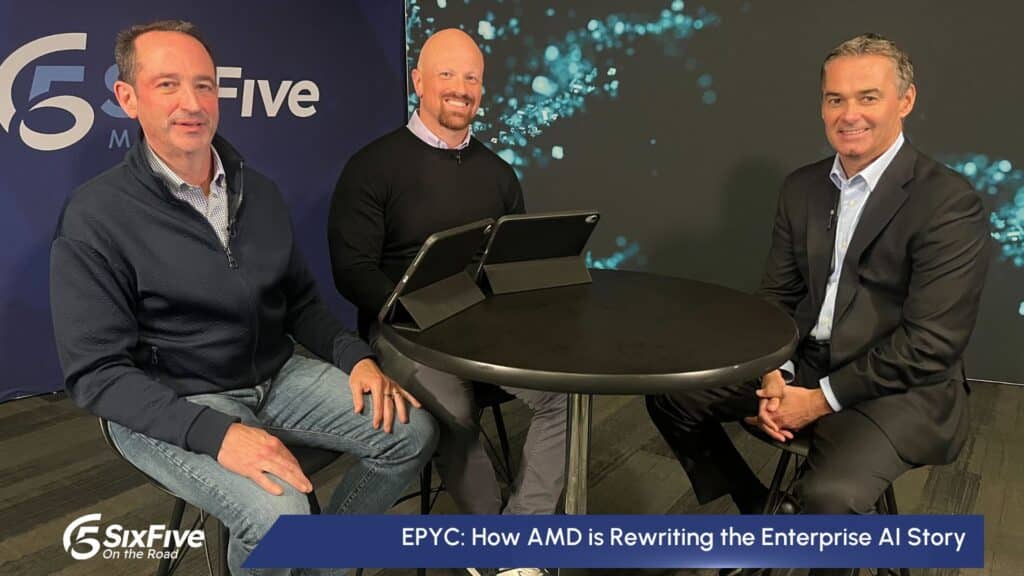Evaluator Group Take on AWS Storage Day File Storage Enhancements
AWS File Cache Due Later in 2022
Although data protection and resiliency was the main focus of news at AWS Storage Day 2022 last week, the public cloud giant also enhanced its file storage performance.
Amazon pre-announced a File Cache service – expected to launch later this year — that accelerates file processing on-premises or in AWS. The high-speed cache is a temporary location for data stored in on-prem file servers or file systems or object stores in AWS. Amazon representatives claim it will enable sub-millisecond latencies and throughput of hundreds of gigabytes per second. Customers can burst on-prem workloads into the cloud, such as media rendering and transcoding, electronic design automation and big data analytics.
When Amazon File Cache goes GA, customers will be able to create a cache in the AWS Management Console or through AWS SDKs or the AWS CLI. Customers can spin up the cache and link it to an on-prem NFS file server, then mount the cache to compute instances on AWS. That will make on-prem data appear as folders and files on the cache. When an AWS compute instance acts as a file for the first time, the cache downloads that file’s data real time. The data then resides in the cache, and the file application can access it at the high throughput and low latency rates. Changes to the data can be exported back to on-prem file servers, and they will remain in the cache.
AWS has greatly increased its file capabilities over the past year. AWS claims roughly 80% of on-premised data is in unstructured file and object format, and unstructured data is growing about 10 times the speed of structured data.
AWS file storage options include EFS (elastic file system) for Linux-based workloads, four FSx managed file systems and FSx and S3 File Gateways files that allow on-premise workloads to use the AWS cloud.
In the last year, AWS has added FSx for NetApp ONTAP and FSx for OpenZFS file systems to go with its FSx for Windows File Server and FSx for Lustre. It also launched the FSx File Gateway in 2021.
File Cache can run with a mixture of on-premises file servers and S3 buckets or AWS FSx file systems, and the data all appears within a single namespace. Customers pay for the cache and performance while in use, and can tear it down when it is no longer in use.
File cache also presents a unified view of file-based applications on AWS. While File Cache is not a file system, its ability to aggregate data from silos into a single view and process it at high speed and scale can prove competitive to global file systems from vendors such as Nasuni, CTERA, Panzura, LucidLink and Hammerspace for companies that already have a NAS file system.
AWS Adds File Storage Badge
AWS also added a File Storage badge at Storage Day for its training program, to go with the Block and File Storage Badges launched early this year.

At AWS re:Invent 2021 last December, AWS revealed an ambitious plan to train 29 million people in cloud skills by 2025. AWS now has five Cloud Storage badges, designed for storage professionals with little experience using public clouds.
Those who earn file, block and object badges receive an AWS Storage Core badge. A core badge plus Data Migration and Data Backup and Disaster Recovery badges earn practitioners an AWS Storage Technologies badge.
Evaluator Group Comments
AWS Storage Day 2022 underscored the popularity of public cloud storage. We expect AWS to continue to expand all of its storage services, which also include Elastic Block Storage for high performance and S3 object storage for backup and archiving. But the growth of customer file storage needs will likely result in more activity around files in the coming months. Look for more FSx services soon, and additional file capabilities in a coming AWS Hybrid Edge launch later this year. While AWS will cover more use cases and file system types with expanded services, that will also bring a need for greater education about which services best fit an organization’s needs.
Evaluator Group offers free and premium research on public cloud storage solutions as well as NAS and Storage as a Service (StaaS) solutions.
Author Information
Dave’s focus within The Futurum Group is concentrated in the rapidly evolving integrated infrastructure and cloud storage markets. Before joining the Evaluator Group, Dave spent 25 years as a technology journalist and covered enterprise storage for more than 15 years. He most recently worked for 13 years at TechTarget as Editorial Director and Executive News Editor for storage, data protection and converged infrastructure. In 2020, Dave won an American Society of Business Professional Editors (ASBPE) national award for column writing.
His previous jobs covering technology include news editor at Byte and Switch, managing editor of EdTech Magazine, and features and new products editor at Windows Magazine. Before turning to technology, he was an editor and sports reporter for United Press International in New York for 12 years. A New Jersey native, Dave currently lives in northern Virginia.
Dave holds a Bachelor of Arts in Communication and Journalism from William Patterson University.





